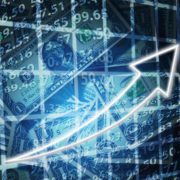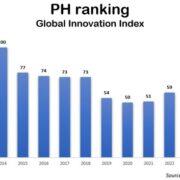Manila — World Bank estimates indicate the Philippine economy will grow at a more rapid pace than Asia’s other regional economic powerhouses, such as China and Malaysia, during the remaining half of the Duterte presidency, given the country’s strong macroeconomic fundamentals and sustained implementation of fiscal and tax reforms.
Finance Undersecretary Gil Beltran said the World Bank’s projections are anchored on the Philippines’ solid external stance and “highly domestically driven” economy, which provides it “ample cushion” against external headwinds that are generally foreseen to slow down global growth this year.
“The Philippines is also expected to remain as an attractive destination for foreign direct investments (FDIs). We are pushing for further liberalization of investment ownership in the country,” said Beltran, the chief economist of the Department of Finance (DOF), during a recent media forum.
Beltran also cited the country’s strong fiscal performance and tax reforms, which will help support the Duterte’s massive “Build, Build, Build” infrastructure modernization program and ensure that the economy’s “growth momentum will be sustained.”
“Moreover, the Philippines has implemented monetary and non-monetary policies to keep inflation manageable and bring it back to the government’s target range of 2 to 4 percent this year,” he said. “Perceived overheating risks have abated, driven by government measures and policies.”
Beltran said World Bank forecasts show that the Philippines’ gross domestic product (GDP) is expected to grow by 6.4 percent this year, second only to Vietnam’s 6.6 percent, and higher than China’s 6.2 percent, Indonesia’s 5.2 percent and Malaysia’s 4.6 percent.
In 2020 and 2021, the Philippines’ GDP growth of 6.5 percent for both these periods will equal Vietnam’s 6.5 percent, also for both periods, and surpass China’s 6.1 and 6.0 percent, respectively. The Indonesian economy is projected to expand 5.3 percent for 2020 and 2021, while Malaysia will maintain its growth at 4.6 percent in both these years.
Beltran noted that tax reform has led to a strong revenue performance, with total revenues growing 15.2 percent from P2.473 trillion in 2017 to P2.850 trillion in 2018, the first year of implementation of the Tax Reform for Acceleration and Inclusion (TRAIN) Act.
Tax revenues grew 14 percent from 2017 to 2018—P2.250 trillion to P2.565 trillion. The 2018 tax effort of 14.7 percent of GDP is the highest in 20 years.
The country’s debt-to-GDP ratio also continued its downward trajectory on the Duterte watch despite its ambitious infrastructure buildup, with national government debt in relation to GDP at 42.1 percent in 2017, and falling further to 41.9 percent in 2018.
On top of a declining external debt exposure, Beltran noted the country also has ample gross international reserves (GIR) and a competitive domestic currency.
He also cited the Philippines’ latest credit rating upgrade from S& P Global– from “BBB” with a positive outlook to “BBB+” with a stable outlook, which is only a notch away from “A” rating territory.
Finance Secretary Carlos Dominguez III said “S&P Global’s credit rating upgrade for the Philippines by one notch higher to “BBB+” is an “undeniable tribute to President Duterte’s unwavering commitment to bold reforms that are crucial to sustained and inclusive growth—and his strong political will to get these tough initiatives at the soonest.”
“To his credit, President Duterte has transcended all the political chatter and stayed focused on pursuing policy initiatives, such as tax reform, trade liberalization and infrastructure modernization, that are necessary to sustain the growth momentum, attract investments and ensure financial inclusion for all Filipinos on his watch,” he added.
Fitch Ratings has also maintained its “BBB” with a stable outlook for the Philippines as of May this year, while Moody’s also affirmed its Baa2 with a stable outlook as of November 2018.
—
Stay updated with news and information from the Department of Finance by visiting their website at https://www.dof.gov.ph.






